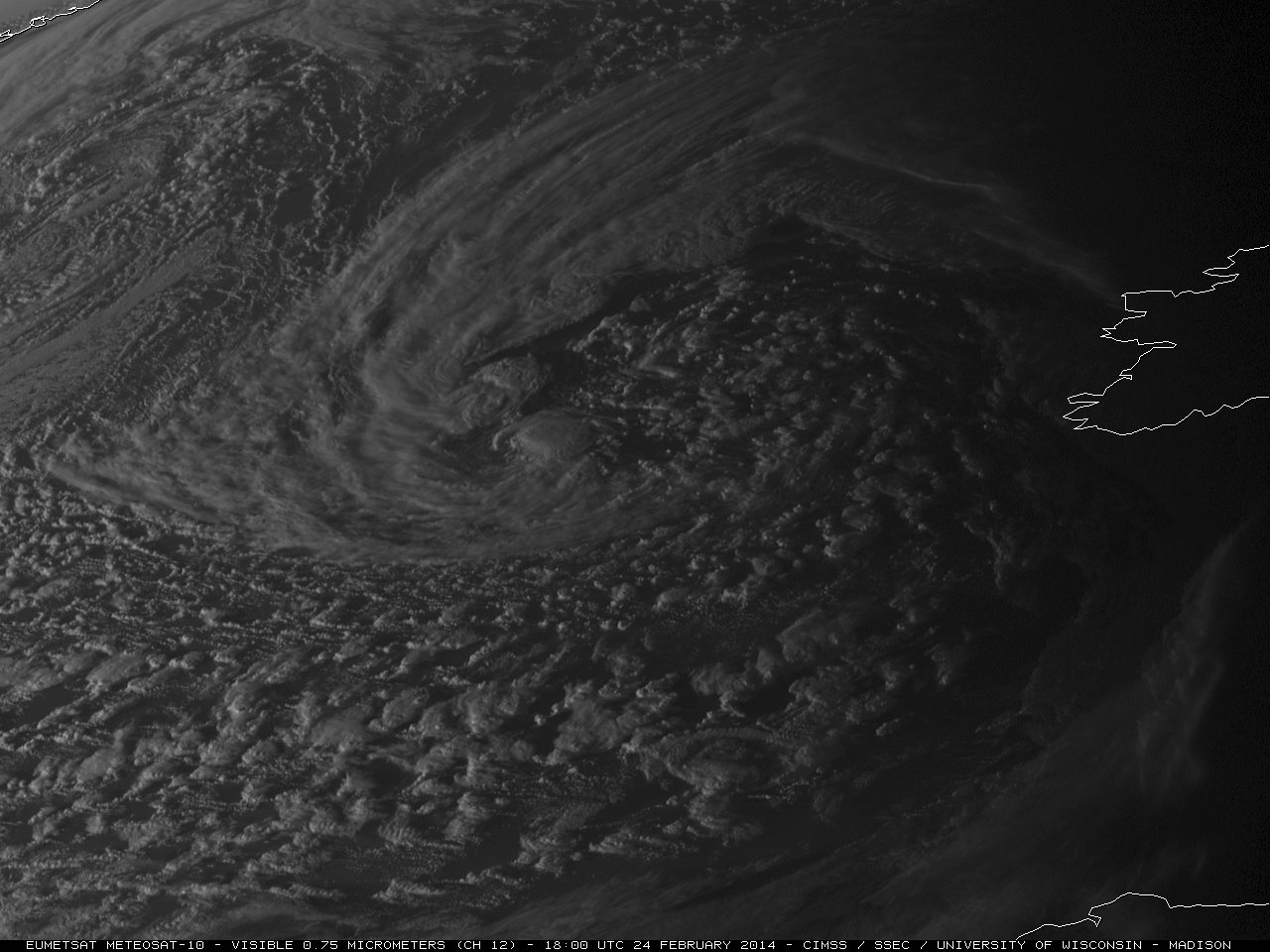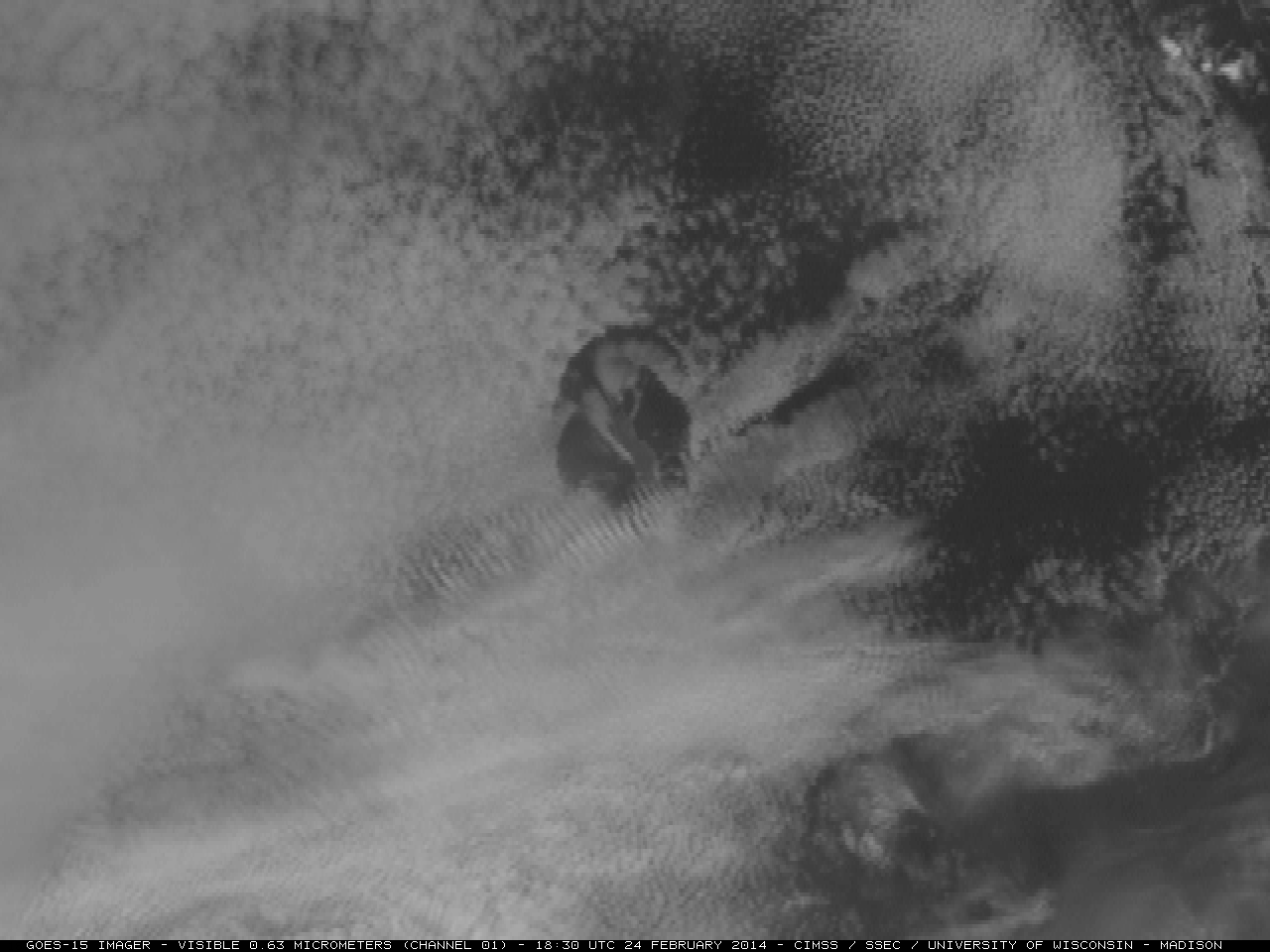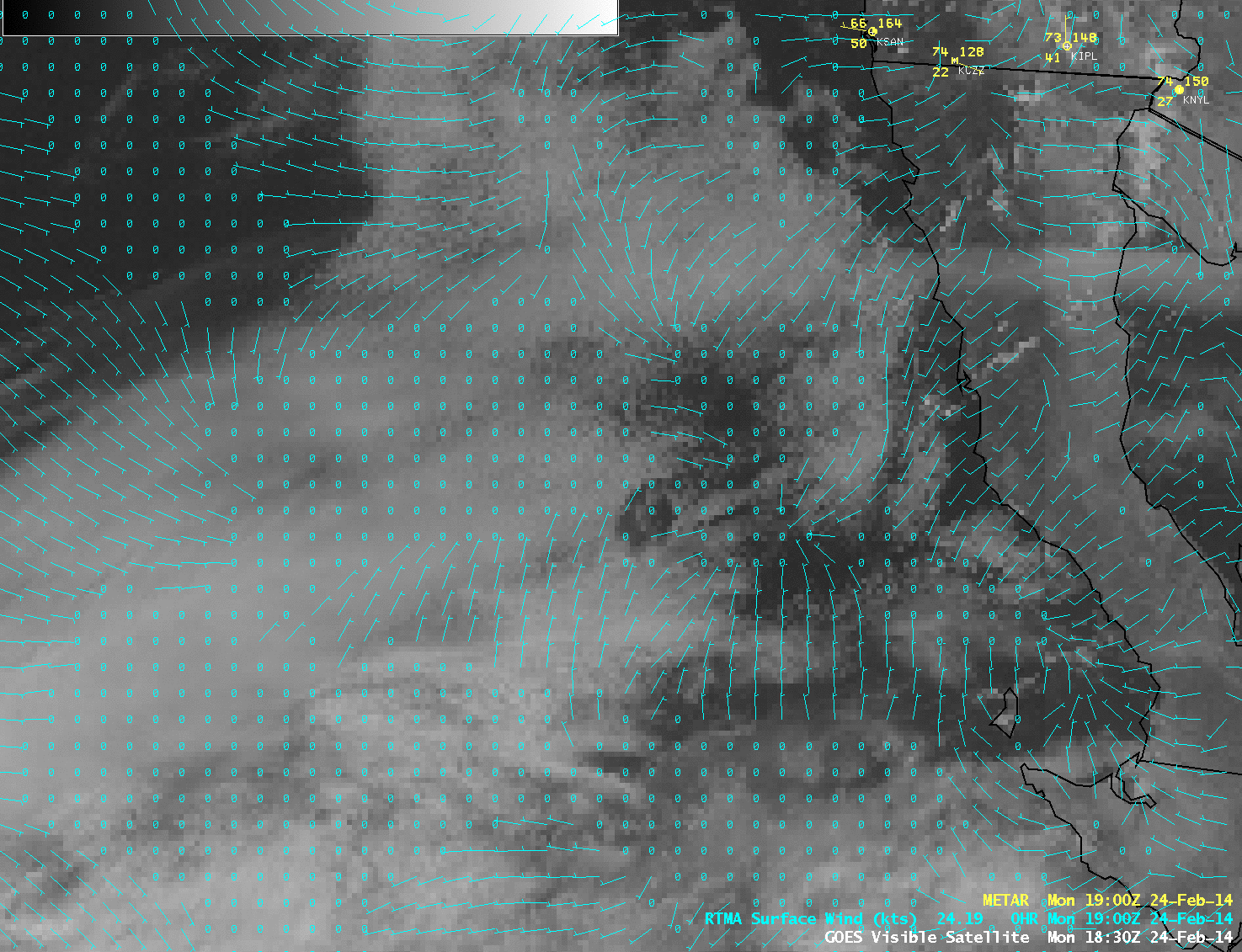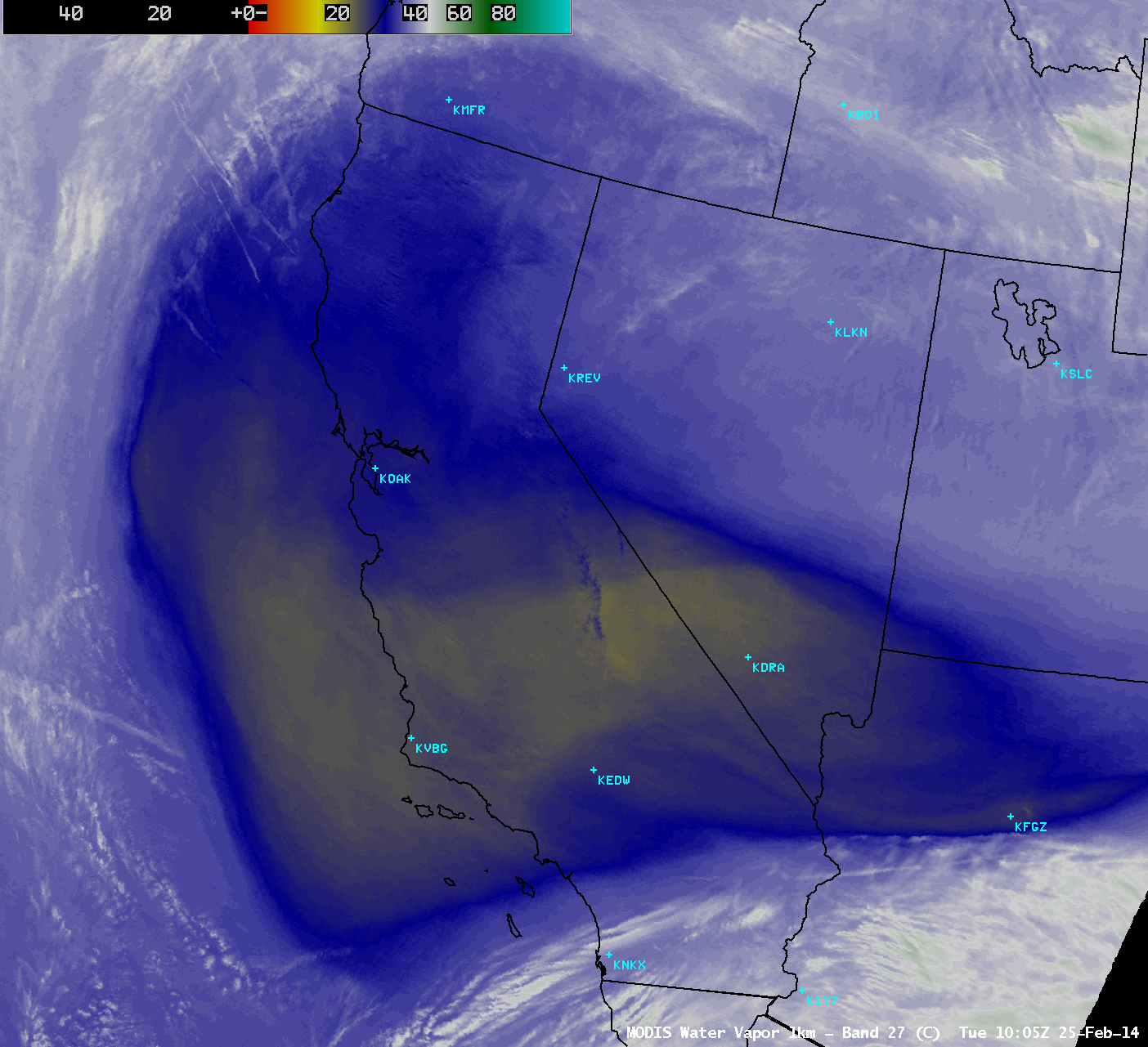
A number of previous blog posts have demonstrated the ability of the water vapor channel to sense surface features when the atmospheric column is cold and/or dry; in this example, the signal of a thin ribbon of high-altitude Sierra... Read More
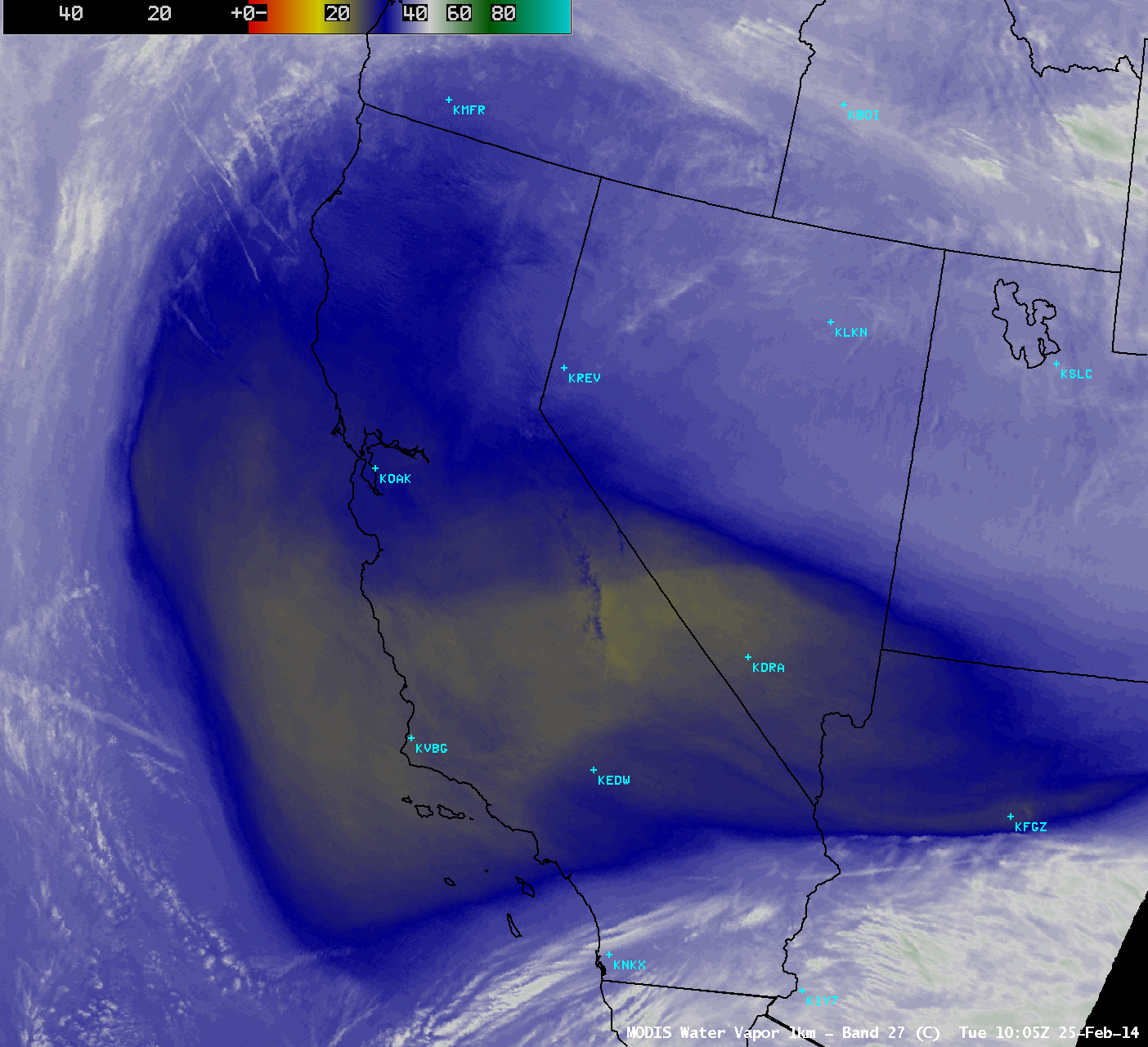
MODIS 6.7 µm water vapor channel image
A number of previous blog posts have demonstrated the ability of the water vapor channel to sense surface features when the atmospheric column is cold and/or dry; in this example, the signal of a thin ribbon of high-altitude Sierra Nevada snow cover can be seen on an AWIPS image of 1-km resolution MODIS 6.7 µm water vapor channel data at 10:05 UTC on 25 February 2014 (above). At that time the middle to upper troposphere over much of southern California was relatively dry, as indicated by the shades of lighter blue to yellow on the water vapor image. The Blended Total Precipitable Water product indicated that TPW values were generally in the 8-10 mm range over the central Sierra Nevada region, which was actually about 130-150% of normal — however, higher resolution TPW values over the Sierra Nevada were as low as 0.7 mm and 1.3 mm according to the GOES-15 sounder and MODIS, respectively.
A similar high-altitude snow signature was seen on 4-km resolution GOES-15 6.5 µm water vapor channel images (below; click image to play animation).

GOES-15 6.5 µm water vapor channel images (click to play animation)
The thin ribbon of high-altitude snow cover showed up as darker blue features on both the MODIS and GOES-15 water vapor images — not because there was more water vapor in that location, but because the temperature of the air above the snow pack was colder than the adjacent lower-elevation bare ground areas. This example helps to underscore the fact that the water vapor channel is essentially an InfraRed (IR) channel, which is sensing the temperature of a layer of moisture (or in this case, the temperature of a colder surface feature).
The altitude (and vertical thickness) of the layer being sensed by water vapor imagery depends on the temperature and moisture profile over that particular region, as well as the satellite viewing angle. The GOES Weighting Functions site allows you to select the rawinsonde profile closest to your area of interest, and a radiative transfer model is then used to calculate the weighting functions for the various GOES imager channels (as well as the 3 GOES sounder water vapor channels). In this case, the rawinsonde profile for Vandenberg Air Force Base (KVBG) in California (below) was the closest sounding site to the pocket of dry air over the Sierra Nevada mountains — and due to the deep layer of dry air aloft, the peak altitude of the GOES-15 6.5 µm water vapor channel weighting function was shifted downward to just below 500 hPa.
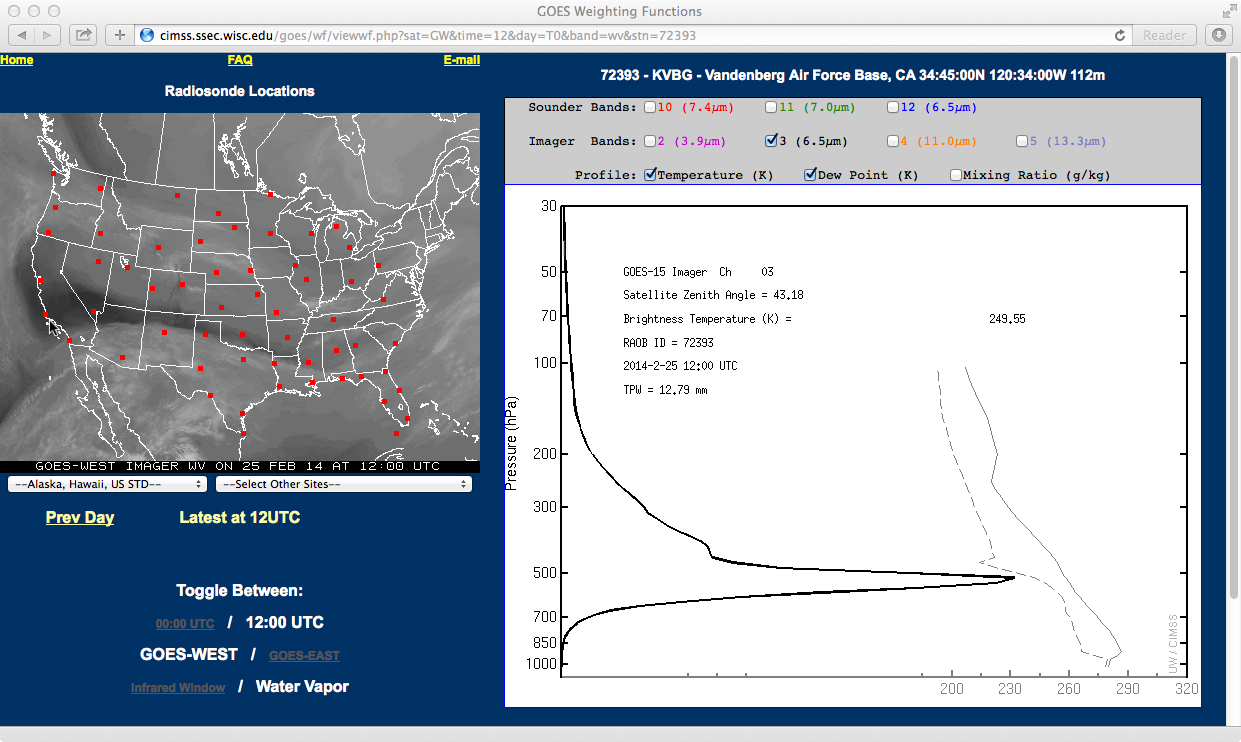
GOES-15 6.5 µm water vapor channel weighting function plot (calculated using Vandenberg CA rawinsonde data)
In a comparison of 3 regional rawinsonde sites (below), note how the altitude of the GOES-15 6.5 µm water vapor channel weighting function peak (as well as the vertical thickness of the weighting function plot) increases over Elko, Nevada (KLKN) and Tucson, Arizona (KTUS) where more middle to upper tropospheric moisture was present.

GOES-15 6.5 µm water vapor channel weighting function plots for Vandenberg CA, Elko NV, and Tucson AZ
View only this post
Read Less









